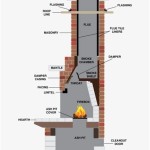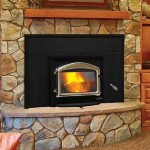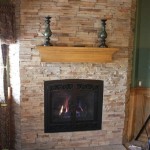Removing A Brick Fireplace: A Comprehensive Guide
The decision to remove a brick fireplace is often driven by a desire to modernize a living space, reclaim square footage, or address structural issues. While seemingly straightforward, removing a brick fireplace is a significant undertaking that requires careful planning, the right tools, and adherence to safety protocols. This article provides a detailed guide on how to safely and effectively remove a brick fireplace.
Before commencing any demolition work, a thorough assessment of the fireplace's structure and its surrounding environment is crucial. This includes identifying load-bearing components, examining electrical wiring or gas lines that might be integrated into the fireplace structure, and understanding the impact of removal on the overall integrity of the building. Consulting with a qualified structural engineer or contractor is highly recommended at this stage, particularly if there are any doubts about the load-bearing capacity of the fireplace or its relationship to the building's structure.
Preparation and Safety Measures
Prior to initiating the demolition process, adequate preparation safeguards both the individual performing the removal and the surrounding environment. This phase involves gathering the necessary tools and safety equipment, as well as protecting the work area from dust and debris.
Essential tools typically include a sledgehammer, a masonry hammer, a cold chisel, a pry bar, a reciprocating saw (or brick saw for cutting through mortar), a drill with masonry bits, safety glasses, work gloves, a dust mask or respirator, hearing protection, and heavy-duty trash bags or a wheelbarrow for debris removal. It's important to ensure all tools are in good working condition before starting.
Safety is paramount. Safety glasses are crucial to protect the eyes from flying debris. A dust mask or respirator is necessary to prevent inhalation of harmful dust particles, particularly silica, which is common in brick and mortar. Work gloves will protect hands from cuts and abrasions. Hearing protection is recommended when using power tools or striking brick with a hammer and chisel.
The work area should be thoroughly covered with drop cloths or plastic sheeting to contain dust and debris. Furniture should be moved away from the fireplace, and doorways leading to other rooms should be sealed off with plastic sheeting to prevent the spread of dust. If the fireplace is connected to a chimney, the chimney flue should be sealed off to prevent debris from falling down into the fireplace area during demolition.
The Demolition Process
The demolition process should be approached systematically and with caution. Starting from the top of the fireplace structure and working downwards is generally recommended. This minimizes the risk of collapse and provides better control over the falling debris.
Begin by carefully removing any decorative elements, such as mantels, shelves, or decorative tiles. These are often attached with screws or nails and can be easily removed with the appropriate tools. Next, use a masonry hammer and chisel to carefully chip away at the mortar joints between the bricks. The goal is to weaken the bond between the bricks, making them easier to remove. For larger sections of brick, a reciprocating saw with a masonry blade or a brick saw can be used to cut through the mortar.
Once the mortar is sufficiently weakened, a pry bar can be used to gently pry the bricks loose. Avoid applying excessive force, as this can cause the bricks to shatter or create flying debris. As the bricks are removed, carefully lower them to the ground to prevent damage to the floor or surrounding surfaces. Stack the bricks neatly for potential reuse or disposal.
Continue this process row by row, working downwards. As the fireplace structure is dismantled, be mindful of any structural supports or connections to the wall. If the fireplace is integrated into a load-bearing wall, temporary supports may be needed to prevent the wall from collapsing. This is another area where consulting with a structural engineer is crucial.
For fireplaces with a firebox, which is the area where the fire is actually burned, the demolition process may require extra attention. Firebricks, which are specifically designed to withstand high temperatures, are often used in the firebox. These bricks can be more difficult to remove than standard bricks. Patience and careful chipping away at the mortar joints are key.
During the demolition process, regularly clear the work area of debris to maintain a safe and organized environment. Use heavy-duty trash bags or a wheelbarrow to transport the debris to a designated disposal area.
Addressing the Chimney and Structural Considerations
The chimney is an integral part of a fireplace system, and its removal or modification requires careful consideration. The extent of chimney removal depends on the overall project goals. If the entire fireplace and chimney are being removed, a professional demolition crew may be necessary, especially for chimneys that extend above the roofline.
If only the portion of the chimney within the living space is being removed, leaving the exterior chimney intact, the chimney flue must be properly capped to prevent water damage and animal intrusion. Additionally, the remaining chimney structure must be inspected for stability and weather resistance. Any necessary repairs should be performed to ensure the chimney's long-term integrity.
Structural considerations are paramount throughout the entire removal process. If the fireplace is part of a load-bearing wall, temporary supports must be installed before any demolition work begins. These supports should be designed by a structural engineer to ensure they can adequately support the weight of the wall. Once the fireplace is removed, the wall must be properly reinforced to maintain its structural integrity. This may involve installing a new beam or adding additional framing.
After the fireplace is removed, the wall surface will likely need to be repaired and refinished. This may involve patching holes, applying drywall, and painting or wallpapering the wall to match the surrounding decor. The floor may also need to be repaired or replaced, depending on the extent of the demolition and the condition of the existing flooring.

Removing A Brick Fireplace

Simple Ways To Remove A Brick Fireplace With S Wikihow

Goodbye Brick Fireplace

Removing Fireplace S Brick Facade Not So Hard

Simple Ways To Remove A Brick Fireplace With S Wikihow

How To Remove Brick The Easy Way Project Allen Designs

Simple Ways To Remove A Brick Fireplace With S Wikihow
How To Remove My Too Big Hearth Help Com Forums Home

Brick Fireplace Makeover Part 1 Demo Demolition

Removing The Fireplace To Create More Space Honing A Healthy Home
Related Posts








